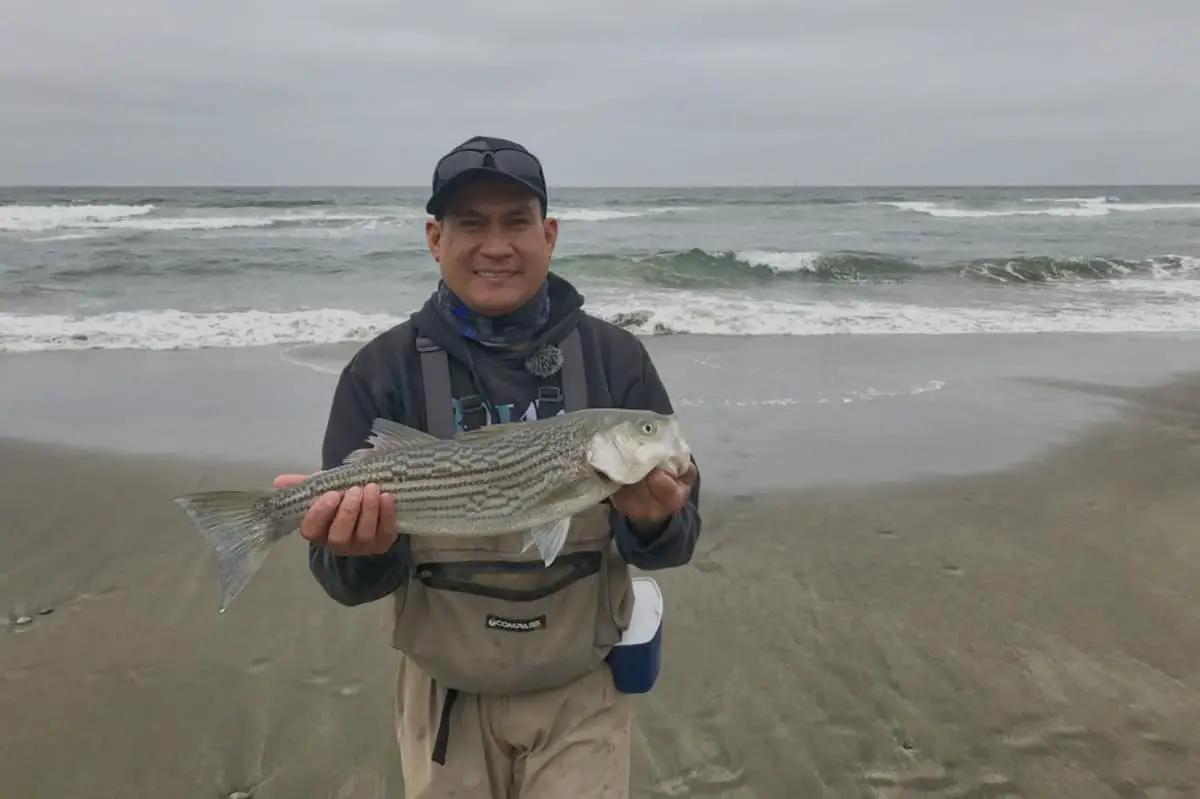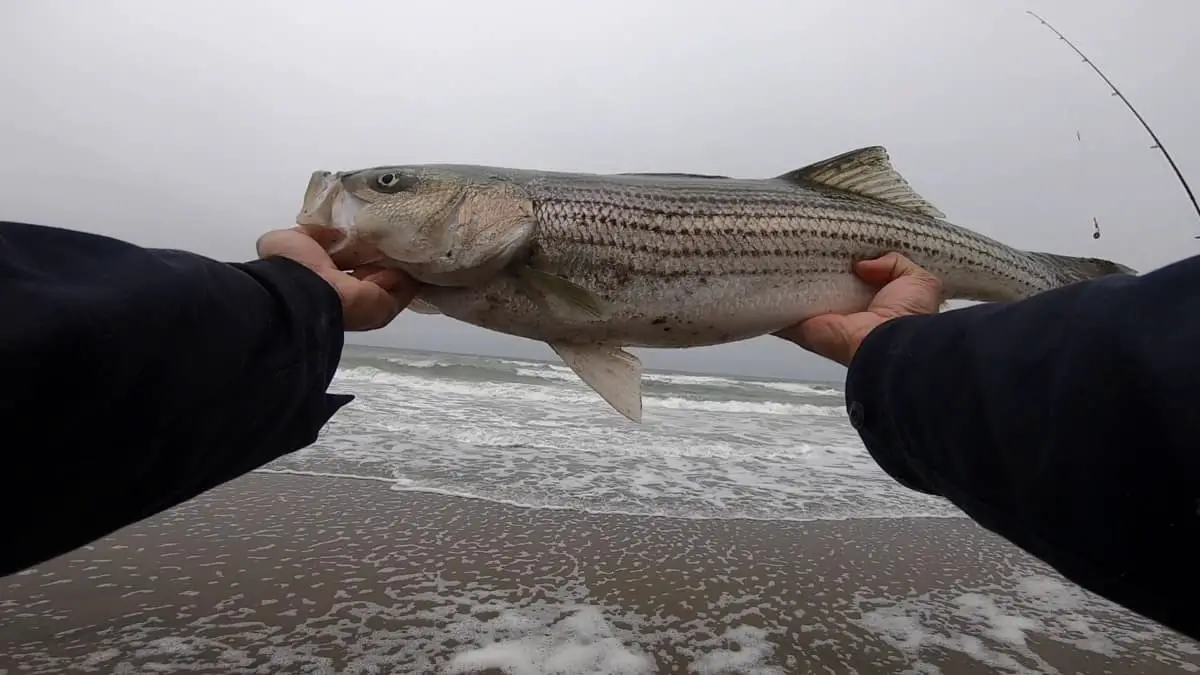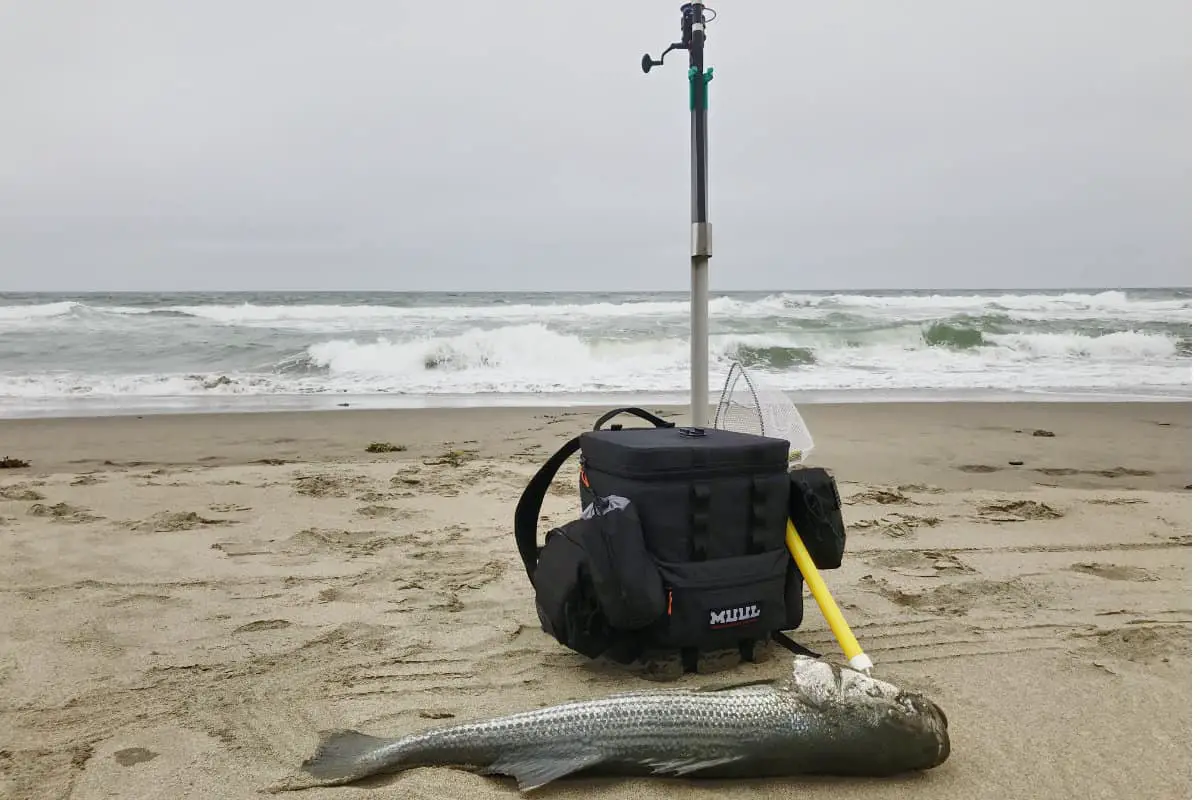If you ask any fisherman what is the best time of the year to catch Striped bass? He would quickly answer “all year round!”. The reason behind is because most fishermen adjust their expectation, way, and style of fishing as the different seasons kick in.
The same can be adapted when fishing for striped bass. Since this fish changes its behavior according to different seasons and weather, you need to be able to adapt to those changes so that you can keep up and catch up with them.
What is the best time of the year to catch striped bass?
For surf casters, the early summer and spring is the best time to catch this fish. Striped bass swims back into the Pacific Ocean after spawning season during spring. In California, they are said to travel as far north as Point Reyes and south as Monterey Bay.
If you pay enough attention to their behavior and migration pattern, you can easily predict where this fish will be heading. You can then adjust your style, technique, and gear accordingly to give you more chance of reeling in a good-sized bite.
When I was new to surf fishing, I did a lot of reading to understand the migration pattern of this fish. And this what I’ve learned. Read on.
Getting to Know the Stripes Bass
Striped bass (Morone saxatilis), also more commonly known as Atlantic striped bass, striper, line sider, and rock or rockfish. It also is an anadromous perciform fish.
It means that this type of fish migrates from saltwater up to freshwaters to spawn and has perch-like fins. They usually spend their life along the Atlantic Coast of North America when not spawning.
This fish is the state fish of South Carolina, Maryland, and Rhode Island. It is also considered as the state saltwater fish of New Jersey, New York, New Hampshire, and Virginia.
This fish prefers cooler water, around 55 – 68℉ and is more active during feeding time usually at dusk or dawn and then the few months before their spawning season.
The best time of the day to catch this fish is before sunrise or before sunset, during low light conditions when they are more likely to swim near the surface.
After stormy and windy weather and during peak tide can also be an excellent time to target this fish. The warming temperature can drive this fish to deeper water, around 30 to 60 feet deeper.
You can still catch this fish by a fishing technique called trolling. You will also have to cast farther away from the shore to achieve this kind of depth.
Trolling is when a line with live bait or lure is dragged through the water by a boat at a certain speed. You can line up a few rods on the back of your boat to give you more chances of catching a fish.
Fishing Techniques by Season

Bass is a tricky fish to catch not just because they migrate![]() , but because of the changes in their behavior that depends on water temperature as well.
, but because of the changes in their behavior that depends on water temperature as well.
Each season presents a new challenge for anglers, but just like any fish, the bass is drawn to their meal and have a specific breeding pattern that you can follow.
So, watch out for schools of fish bait and the birds that feed on them, they can be a great sign that bass is around and feeding.
Summer: Mid-June to Early-September
The early summer is an excellent time to catch this fish because the weather is still not that hot, and the water’s still reasonably cool. Dawn and dusk will yield you more hits because these are the coldest times of the day.
You can still topwater fish during this time, and this can bring in a nice sized bass, especially during cooler weather.
Mid-summer is the hottest time of the year, and therefore bass swims deeper to cooler waters. This time is not particularly great for those who are looking for big bass to catch.
For a better chance to catch large sizes of this fish, you need to know that most bass would be swimming in a dense school at a depth of 30 to 60 feet during this time.
Try fishing a few hours before the sun comes up until around ten or eleven am. You also need to cast your line farther to deeper waters for you to score a catch. You can do trolling to entice the fish to bite your bait more.
Fall: Late September to Early December
As the water cools during mid-September, the bass comes closer to the surface once more, and topwater strikes will once again be plenty. Watch out for cold spells as this can slow down biting. You will need to adjust your fishing style again when a cold season rolls in.
Around late October up to mid-November is the time you’ll experience a great more topwater action. Try heading out during the cloudy days when there is a slight breeze blowing and avoid sunny days for better biting hits.
Around the end of this season, you will see that the topwater bites come less and less due to the cold temperature of the water. This typically signals that bass is now moving to the north ends of lakes and is getting ready for their spawning season.
It is time for you to rethink your strategy once more and tailor-fit it to catch a bass.
Winter: Late December to Early March
Most anglers would hang their rods this time, but some prefer this season because the bass is really active during this time, both in shallow and deep water. This allows the fewer anglers who fish during this season a much bigger chance to reel in a big catch.
The best advice that an angler can give you during this time is to follow the birds because they tend to follow schools of baitfish, which can really be hard to spot during winter. Winter is a great time to fish due to fewer boat traffic if you can stand the frigid water temperature and cold weather.
This is the time to slow it down. You’ll get a better chance of a hit when you pause your bait for about 10 to 20 seconds to entice the fish to bite. Topwater fishing can still reel in a few catches but not as much during the springtime.
Spring: Late March to Mid-June
During this time, giant schools of bass can be seen churning the waters, especially during April. This is the best time to catch this fish as they start to populate the shallow waters and get ready for their long swim up to freshwater for their spawning season.
Topwater action is at its highest during these months. This is the last chance for a bass to eat up and store body fats to help them get through their spawning season.
Around May, the bigger bass joins the fun, and this is a great time to catch 15 to 20 pounds bass from the shore. Head to areas near river mouths or bay entrances to increase your chance of finding the big ones.
Fish during dusk because they are more active during this time. After June, you might need to wait for fall for a chance to catch a large bass again.
Conclusion

As you can see, the bass is a tricky fish to catch, but once you learn their feeding pattern, spawning schedule, and water behavior, you’ll be able to find them all year round.
You will have to adjust your fishing techniques and gear for every season, but if you really love this sport, then that is a challenge that you are more than welcome and willing to face.
Don’t forget to secure a license before you fish, you don’t want to be arrested for doing something you love.

